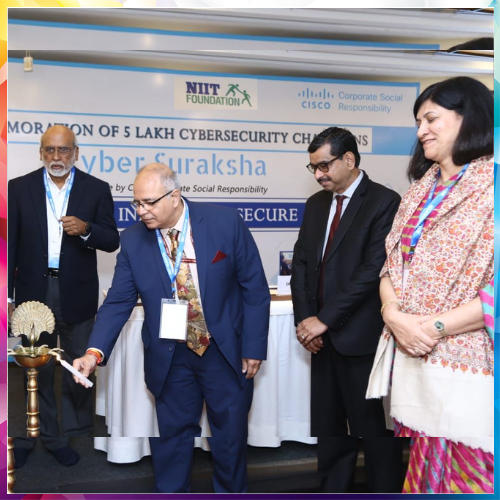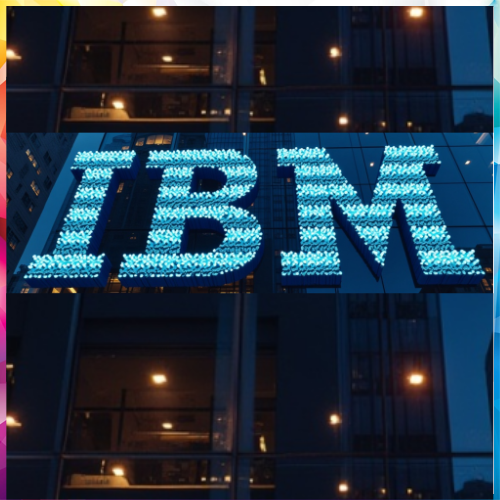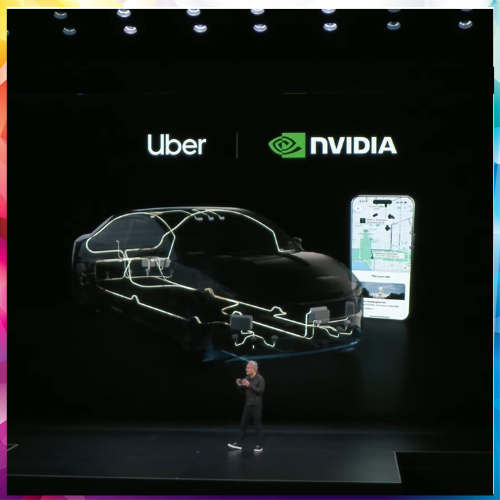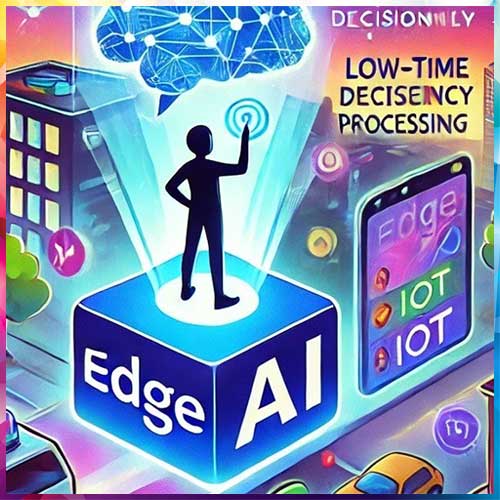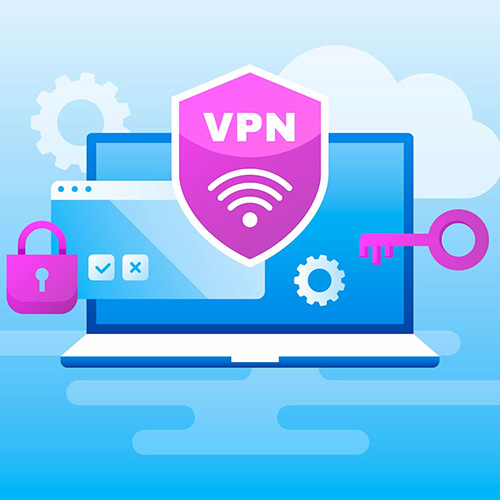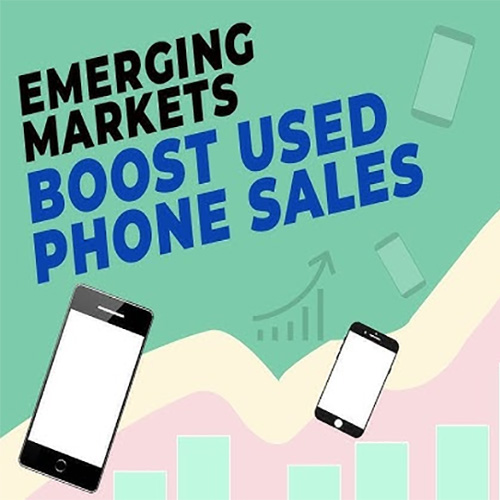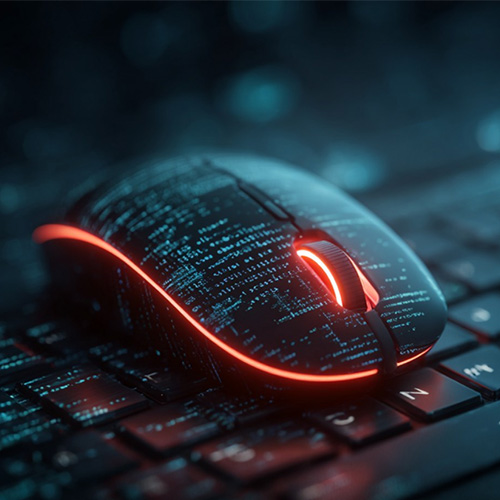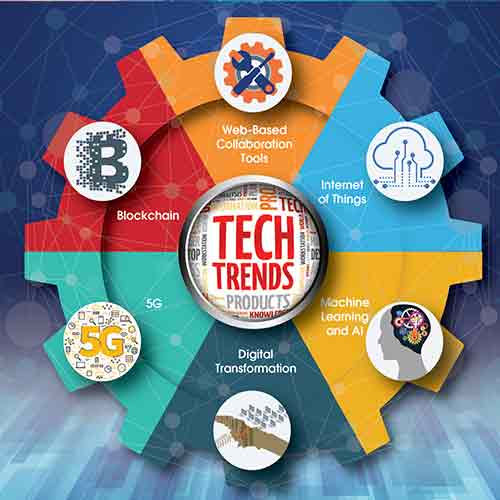
It will be unwise to not accept the fact of how technology has impacted our lives in many ways and has revolutionized how we function. While the year 2019 had been remarkable in terms of new technology implementations and most importantly digital transformation, 2020 will be dominated by Machine Learning (ML), Artificial Intelligence (AI), which will eventually propel advancements in Internet of Things (IoT) and Robotic Process Automation (RPA).
 Says Devendra Kamtekar, CEO - DIGISOL Systems, “This year technologies like Artificial Intelligence, Machine Learning, Internet of Things, 5G, cloud computing will evolve and would have even more impact on our lives. Besides this, IoT, 5G & Machine learning are also expected to become mainstream. We have been talking about 5G for a while; however, 2020 is the year for 5G. 5G will allow faster download and data transfer and allow us to realize the potential of a fully connected world.”
Says Devendra Kamtekar, CEO - DIGISOL Systems, “This year technologies like Artificial Intelligence, Machine Learning, Internet of Things, 5G, cloud computing will evolve and would have even more impact on our lives. Besides this, IoT, 5G & Machine learning are also expected to become mainstream. We have been talking about 5G for a while; however, 2020 is the year for 5G. 5G will allow faster download and data transfer and allow us to realize the potential of a fully connected world.”
 “We expect the year 2020 to be a transformative one in terms of new technologies,” Nitin Mishra, Senior Executive Vice-President & Chief Product Officer, NTT-Netmagic. “It will be a breakthrough moment for AI in manufacturing. We will see the emergence of emotion recognition and computer vision. There will be an increased demand for edge computing processing power. Edge computing can help bring data storage and computation closer to businesses, improves response time and saves bandwidth.”
“We expect the year 2020 to be a transformative one in terms of new technologies,” Nitin Mishra, Senior Executive Vice-President & Chief Product Officer, NTT-Netmagic. “It will be a breakthrough moment for AI in manufacturing. We will see the emergence of emotion recognition and computer vision. There will be an increased demand for edge computing processing power. Edge computing can help bring data storage and computation closer to businesses, improves response time and saves bandwidth.”
 Giving a holistic overview of the technology market, Dave Russell, Vice President of Enterprise Strategy, Veeam Software says, “In 2020, cyber threats will increase, while businesses will look to Cloud Data Management to guarantee the availability of data across all storage environments. Consequently, the emphasis of the backup and recovery process will shift towards the recovery stage. Additionally, container adoption will become more mainstream which will lead to faster software production through more robust DevOps capabilities and Kubernetes will consolidate its status as the de facto container orchestration platform.”
Giving a holistic overview of the technology market, Dave Russell, Vice President of Enterprise Strategy, Veeam Software says, “In 2020, cyber threats will increase, while businesses will look to Cloud Data Management to guarantee the availability of data across all storage environments. Consequently, the emphasis of the backup and recovery process will shift towards the recovery stage. Additionally, container adoption will become more mainstream which will lead to faster software production through more robust DevOps capabilities and Kubernetes will consolidate its status as the de facto container orchestration platform.”
 Sandeep Bhambure, Vice President and Managing Director, India & SAARC, Veeam Software says, “The future holds unlimited possibilities for data, AI, RPA and analytics. B2C businesses in financial, retail, manufacturing and healthcare sectors will increasingly prefer these engines of intuitive solutions than the traditional software. Large scale enterprises will use AI and analytics together to understand real-time insights into finance, sales, marketing, product development, and other processes.”
Sandeep Bhambure, Vice President and Managing Director, India & SAARC, Veeam Software says, “The future holds unlimited possibilities for data, AI, RPA and analytics. B2C businesses in financial, retail, manufacturing and healthcare sectors will increasingly prefer these engines of intuitive solutions than the traditional software. Large scale enterprises will use AI and analytics together to understand real-time insights into finance, sales, marketing, product development, and other processes.”
 Chandrahas Panigrahi, CMO and Consumer Business Head - Acer India says that the year 2020 will bring many new game-changing technologies trends that will come to be accepted.
Chandrahas Panigrahi, CMO and Consumer Business Head - Acer India says that the year 2020 will bring many new game-changing technologies trends that will come to be accepted.
“A few of the trends are - 1. AI Security: Future AI security will have 3 key perspectives: a) Protection of AI-powered systems, secured AI training data, trained pipelines and machine learning models; b) leveraging AI to enhance security defense, and utilizing machine learning to understand patterns, uncovering attacks and automating parts of the cybersecurity processes.
2. Quantum Technology: Quantum computers will disrupt current techniques and solve previously distant problems, creating valuable solutions for industry.
3. Augmented Reality: The Augmented Reality saw its record growth in 2019. It is to be considered as one of the most stimulating technological developments of recent years,” he says.
 Eddie Zaneski, Manager - Developer Relations, DigitalOcean says, “Last year, Blockchain was heavily buzzed about as a technology we had seen developing in 2019. In 2020, however, developers will look beyond the noise around Blockchain and focus more on practical ways to utilize the underlying technology of Blockchain.”
Eddie Zaneski, Manager - Developer Relations, DigitalOcean says, “Last year, Blockchain was heavily buzzed about as a technology we had seen developing in 2019. In 2020, however, developers will look beyond the noise around Blockchain and focus more on practical ways to utilize the underlying technology of Blockchain.”
 “In the digital economy, more and more Indian organizations are racing against time to transform into digital-first businesses to accelerate innovation and expand growth,” says Sanjoy Mukherjee, Head-Alliances and Channels, Technology Business - Oracle India. “With cloud as the bedrock of innovation, customers are keen to experiment with new technologies to elevate customer experience and business productivity. Technology paradigms such as AI/ML, IoT, Blockchain, Chatbots etc are expected be more widely used in 2020, as newer use cases emerge. Also, organizations will look to embed intelligence into every aspect of their business.”
“In the digital economy, more and more Indian organizations are racing against time to transform into digital-first businesses to accelerate innovation and expand growth,” says Sanjoy Mukherjee, Head-Alliances and Channels, Technology Business - Oracle India. “With cloud as the bedrock of innovation, customers are keen to experiment with new technologies to elevate customer experience and business productivity. Technology paradigms such as AI/ML, IoT, Blockchain, Chatbots etc are expected be more widely used in 2020, as newer use cases emerge. Also, organizations will look to embed intelligence into every aspect of their business.”
# A data-oriented economy
Technology is embedded in everything we do today and with this data consumption continues to grow and organizations are trying to identify insights from the quantum of data they collect.
 “The number one focus in many organizations today is to drive value from the data,” says Badrinarayanan Jagannathan, Vice President – IT Applications, Juniper Networks. “2020 will see continued focus in the areas of Artificial Intelligence and Machine Learning. Tools and solutions that enable business decision makers to analyze data and drive insights at scale will be of critical focus.”
“The number one focus in many organizations today is to drive value from the data,” says Badrinarayanan Jagannathan, Vice President – IT Applications, Juniper Networks. “2020 will see continued focus in the areas of Artificial Intelligence and Machine Learning. Tools and solutions that enable business decision makers to analyze data and drive insights at scale will be of critical focus.”
 “As India rapidly transforms into a digital society, there is a significant amount of data being generated in the country. This data will prove to be mission critical resource for organizations, helping them to remain competitive and relevant in the dynamic ecosystem. Hence, these organizations are extensively recognizing the need to adopt robust and agile data protection solutions,” said Ripu Bajwa, Director & General Manager - Data Protection Solutions, Dell Technologies.
“As India rapidly transforms into a digital society, there is a significant amount of data being generated in the country. This data will prove to be mission critical resource for organizations, helping them to remain competitive and relevant in the dynamic ecosystem. Hence, these organizations are extensively recognizing the need to adopt robust and agile data protection solutions,” said Ripu Bajwa, Director & General Manager - Data Protection Solutions, Dell Technologies.
Yogesh B Dutta, COO - CP PLUS feels that in the current scenario, data is the biggest asset for any organization. “A big data revolution has arrived with the snowballing use of the Internet. Using big data analytics has several benefits, such as bringing cost advantages to businesses, time reduction, and creating new growth opportunities. Along with this, robotic process automation will empower business professionals to easily configure software robots to automate repetitive, mundane tasks between multiple systems which previously required humans to perform, thereby filling in automation gaps to improve business processes.”
According to Anjani Kommisetti, Country Manager, India & SAARC, Raritan & ServerTech, data explosion is only going to explode a more with 5G coming in. “From a data localisation perspective, storage will be one of the biggest challenges for India’s data center market. Imagine storage for billions of data points generated daily that need the right scalability and agility to be able to draw insights from it. This will ensure that the most important data is held on their Storage Area Network (SAN) while the less important, unstructured data goes to the backend of the storage system.”
# Cloud will gain more prominence
2020 will see continued focus on migration to cloud and adopting cloud native tool sets to transform the way IT organizations work. This is critical for large companies to leverage the value from the cloud and make their organizations more agile.
According to Nitin Mishra of Netmagic, cloud storage and computing are already embraced by businesses. The next big thing will be the distributed cloud system. “By 2020, about 75% of the enterprise-generated data will be processed regardless of the centralized data center. Distributed cloud storage will therefore be a breakthrough. This is also going to be an era of quantum computing. It will enable better handling of the enormous amount of data being generated today across sectors.”
# Advanced servers
 “We are seeing the emergence of the next data decade, where new-age technologies has disrupted IT operations, business models, and markets – creating a need for organizations to revamp their traditional IT infrastructures. For a seamless transition into the future of IT, these organizations need to deploy advanced servers that form the bedrock of modern IT infrastructure,” said Rudramuni B, Vice President & India R&D Head, Dell Technologies. “With server infrastructure being key to data center security, in 2020, we will witness the rise of holistic server solutions which will have security in-built into the infrastructure design rather than adding as an extra layer.”
“We are seeing the emergence of the next data decade, where new-age technologies has disrupted IT operations, business models, and markets – creating a need for organizations to revamp their traditional IT infrastructures. For a seamless transition into the future of IT, these organizations need to deploy advanced servers that form the bedrock of modern IT infrastructure,” said Rudramuni B, Vice President & India R&D Head, Dell Technologies. “With server infrastructure being key to data center security, in 2020, we will witness the rise of holistic server solutions which will have security in-built into the infrastructure design rather than adding as an extra layer.”
# 2020 will be the Year of 5G
With speeds of up to 10 gigabits per second, 5G is set to be as much as 100 times faster than 4G. Businesses will continue to roll out the next phase of 5G which will include private networks designed for manufacturing sites – to enable better employee productivity, machine efficiency and an increase in profitability.
 Says Gianfranco Lanci, Corporate President and COO, Lenovo, “While devices will begin to roll out rapidly, consumers won’t experience the full realization of this technology for a while until 5G networks, carriers and infrastructure are more commonplace. The fifth generation of mobile wireless communications promises to bring opportunities to businesses across all industries with greater ability to connect many more devices at once and move more data with its faster speed.”
Says Gianfranco Lanci, Corporate President and COO, Lenovo, “While devices will begin to roll out rapidly, consumers won’t experience the full realization of this technology for a while until 5G networks, carriers and infrastructure are more commonplace. The fifth generation of mobile wireless communications promises to bring opportunities to businesses across all industries with greater ability to connect many more devices at once and move more data with its faster speed.”
 “With 5G networks soon becoming a reality, it will enable data-intensive processes, bringing in speed with higher capacity of connected devices and low latency. With the increased applications run on over 5 billion mobile devices and a billion sensors on IoT devices – there will be an exponential rise of data that needs to be managed and analyzed through sophisticated tools. Smart city applications and revolutionary applications such as augmented reality, virtual reality, and self-driving cars will ride on 5G infrastructure,” says Huzefa Motiwala, Senior Director, Systems Engineering, APAC- Commvault.
“With 5G networks soon becoming a reality, it will enable data-intensive processes, bringing in speed with higher capacity of connected devices and low latency. With the increased applications run on over 5 billion mobile devices and a billion sensors on IoT devices – there will be an exponential rise of data that needs to be managed and analyzed through sophisticated tools. Smart city applications and revolutionary applications such as augmented reality, virtual reality, and self-driving cars will ride on 5G infrastructure,” says Huzefa Motiwala, Senior Director, Systems Engineering, APAC- Commvault.
# Growth of the telecom equipment industry
The preceding year has set the right momentum for telecom and related technologies to proliferate further. The advancements witnessed in the wireless connectivity space are all set to evolve to wireless Gigabit networking and the resultant access to high speed quality broadband will drive uptake of new-age concepts such as smart cities, IoT, IIoT, analytics, cloud and smart education to cite a few.
“From a telecom perspective, the following trends will emerge at the top of all considerations:
Gigabit to the Home and Desktop – With the advancements in millimetre wave and mesh technology pertaining to 5G architectures, the last-mile connectivity particularly in the last 20 kms of the access network can now be covered thereby benefitting both service providers and enterprise network players.
Proactive Capacity in the Network – Overcoming the challenges encountered in meeting capacity, enterprise network operators as well as service providers will now be able to rapidly add capacity on demand at the edge of the network leveraging from network monitoring and predictive algorithm capabilities to identify bottlenecks and pre-empt any potential fallout.
 Convergence of LAN/WAN – The combination of Gigabit speed wireless communications with fiber backbone will be the technology of choice for distribution and access,” cites Rajiv Kapoor, Vice President, India & SAARC, Cambium Networks.
Convergence of LAN/WAN – The combination of Gigabit speed wireless communications with fiber backbone will be the technology of choice for distribution and access,” cites Rajiv Kapoor, Vice President, India & SAARC, Cambium Networks.
 J N Mylaraiah - Director, Enterprise Sales, India & SAARC, CommScope comments that consumers will continue to hear about 5G and the benefits it will offer and operators will be busy in 2020 rolling out, densifying, and powering the network in a variety of bands while working on driving the standards and technology. “This year will also mark a tipping point for key network, customer premise equipment, and smart home technology that’s been in the works for years. The confluence of technologies such as 6GHz spectrum and Wi-Fi 6 are pushing a range of new services in the realm of reality.”
J N Mylaraiah - Director, Enterprise Sales, India & SAARC, CommScope comments that consumers will continue to hear about 5G and the benefits it will offer and operators will be busy in 2020 rolling out, densifying, and powering the network in a variety of bands while working on driving the standards and technology. “This year will also mark a tipping point for key network, customer premise equipment, and smart home technology that’s been in the works for years. The confluence of technologies such as 6GHz spectrum and Wi-Fi 6 are pushing a range of new services in the realm of reality.”
5G has launched in places around the world, but it is only in its infancy. 2020 will be the year that network operators put the pieces into place to deliver the 5G promise and we will watch as the lines between wireless and wireline continue to blur.
While 2019 saw the introduction of Wi-Fi 6 certified products, the deployment of shared spectrum, availability of 5G handsets and service in select cities, and an uptick in interest for private networks. These new standards, products and services will give enterprises more choices in 2020 as to how they meet increased demands for both capacity and coverage, as well as meet increased end-user expectations.
# Physical Access Control space to evolve further
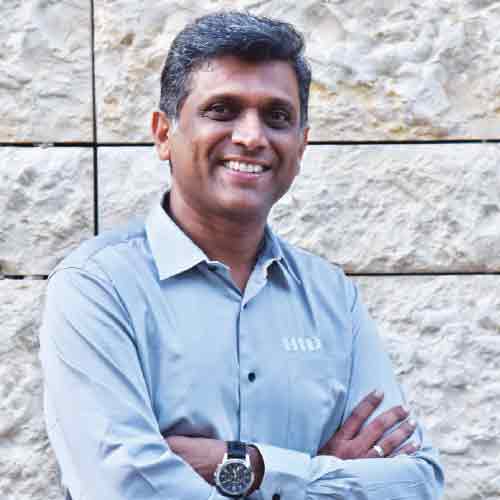 As we enter a new decade, enterprises and institutions alike will increasingly embrace innovation in the physical access control domain. According to Prabhuraj Patil, Regional Sales Director, South Asia, PACS - HID Global, the following trends will embrace the area -
As we enter a new decade, enterprises and institutions alike will increasingly embrace innovation in the physical access control domain. According to Prabhuraj Patil, Regional Sales Director, South Asia, PACS - HID Global, the following trends will embrace the area -
• “Access control will become more valuable to users and less visible: The identity technology industry will combine biometrics technologies with machine-learning-based decision-making at the edge, mobile IDs, and new wireless location-service technologies like UWB to expand access control use cases while making them more intuitive and friction-free for users.
• Trusted Identities will enable smarter workplaces, factories and business processes: Marrying access control with mobile, cloud and IoT-based location- service technologies are expanding trusted identities’ role in today’s smart buildings, facilities and business processes, from creating more connected workplace experiences, to protecting retail brands from counterfeiting, to simplifying and securing Industry 4.0.”
There is also the opportunity to generate valuable insights from today’s access control solutions, using machine learning analytics to improve security, personalize the user experience and make better business decisions. We are pursuing each of these opportunities and more with our growing portfolio.
# Security to undergo a new paradigm change
 According to Rohan Vaidya, Regional Director of Sales - India, CyberArk, phishing or using credentials procured from the Dark Web remains the most effective way of getting a foothold into an organization for sophisticated attackers. “So the biggest threat to companies is how they lock down the route from initial compromise to their critical data and assets. The perimeter is porous and smart companies know that attackers will get in. They understand that defences need to be focused around preventing attackers moving around the network to get to the end goal, whether that is IP theft, network takeover or whatever else it might be. In 2020, we could start seeing attackers focus more on what drones know and how that information can be exploited for intelligence gathering, corporate espionage and more.”
According to Rohan Vaidya, Regional Director of Sales - India, CyberArk, phishing or using credentials procured from the Dark Web remains the most effective way of getting a foothold into an organization for sophisticated attackers. “So the biggest threat to companies is how they lock down the route from initial compromise to their critical data and assets. The perimeter is porous and smart companies know that attackers will get in. They understand that defences need to be focused around preventing attackers moving around the network to get to the end goal, whether that is IP theft, network takeover or whatever else it might be. In 2020, we could start seeing attackers focus more on what drones know and how that information can be exploited for intelligence gathering, corporate espionage and more.”
Huzefa Motiwala, Senior Director, Systems Engineering, APAC- Commvault observes that data security and Governance are two key trends that will impact businesses as well as consumers in 2020. “As consumers become more active in ensuring their data privacy, like sharing lesser information or unsubscribing from digital platforms, robust data protection capabilities will become critical in winning consumer trust. With the draft data bill in place, companies will face pressure to ensure the entire data lifecycle is safe and as per the evolving regulations. Therefore, adopting just one IT service across different geographies will no longer suffice in the time to come.”
 Shrikant Shitole Senior Director & Country Head, India, FireEye feels that there will be a broadening push on cloud providers to offer more proof of compliance to industry regulations and customer requirements, with clear ways for their customers to validate what vendors are doing. “It will also be imperative to focus resources on properly securing the cloud, work with cloud platforms and gaining visibility across multiple cloud providers,” he says.
Shrikant Shitole Senior Director & Country Head, India, FireEye feels that there will be a broadening push on cloud providers to offer more proof of compliance to industry regulations and customer requirements, with clear ways for their customers to validate what vendors are doing. “It will also be imperative to focus resources on properly securing the cloud, work with cloud platforms and gaining visibility across multiple cloud providers,” he says.
# AI, IoT & ML will drive marketing trends
 In 2020, a lot more companies will adopt and implement the right technologies to enhance the overall customer experience and relationship. One among them will be AI (artificial intelligence).
In 2020, a lot more companies will adopt and implement the right technologies to enhance the overall customer experience and relationship. One among them will be AI (artificial intelligence).
“The proliferation of artificial intelligence (AI) in everyday life, such as personalized product recommendations and voice-activated personal assistants are pushing companies across industries to meet and exceed the ever-rising standards of engagement,” says Sunil Jose – Senior Vice President & Country Leader at Salesforce India. “AI helps boosts productivity of marketers by empowering them to channel their time more efficiently. For instance, AI provides smart social insights that allow marketers to connect and evolve messages across channels based on customer behaviour, and provide automated, personalized customer journeys.”
 Says Rick Rider, Senior Director, Product Management- Infor, “In 2020, enterprise Artificial Intelligence becomes more intellectual. To meet growing enterprise user expectations, AI Digital Assistants will evolve into ‘Intellectual Digital Assistants.’ 2020 will be the year when these digital assistants, using Artificial Intelligence (AI) and Machine Learning (ML), start to understand the context of what users are doing, recommend potential next steps (based on completed actions), identify mistakes and auto-correct inputs, and start to engage with users in dynamic, on-the-fly conversations.”
Says Rick Rider, Senior Director, Product Management- Infor, “In 2020, enterprise Artificial Intelligence becomes more intellectual. To meet growing enterprise user expectations, AI Digital Assistants will evolve into ‘Intellectual Digital Assistants.’ 2020 will be the year when these digital assistants, using Artificial Intelligence (AI) and Machine Learning (ML), start to understand the context of what users are doing, recommend potential next steps (based on completed actions), identify mistakes and auto-correct inputs, and start to engage with users in dynamic, on-the-fly conversations.”
 CP Plus also looks at Internet of Things (IoT) as an essential and strategic component to digitally transform the country. “IoT has a lot of potential and it has increasingly become popular and comes across as an extremely valuable service. This trend will continue to gain prominence, as according to a study by Gartner, there will be 20 billion connected devices worldwide. We can also look at the Make in India initiative. If we want to build successful industries that can leverage technologies to build a competitive edge and compete on a worldwide scale, IoT as a tool to communication-enable specific operational and business functions becomes an essential tool,” says Yogesh Dutta.
CP Plus also looks at Internet of Things (IoT) as an essential and strategic component to digitally transform the country. “IoT has a lot of potential and it has increasingly become popular and comes across as an extremely valuable service. This trend will continue to gain prominence, as according to a study by Gartner, there will be 20 billion connected devices worldwide. We can also look at the Make in India initiative. If we want to build successful industries that can leverage technologies to build a competitive edge and compete on a worldwide scale, IoT as a tool to communication-enable specific operational and business functions becomes an essential tool,” says Yogesh Dutta.
 Augmented Reality (AR) is not a new concept, but its implementation will take a front seat when it comes to data centre management, according to Vivek Sharma, MD – India, Lenovo DCG. “AR enables real-time use of information in the form of graphics, texts, videos and other visualisations, integrated with real-world situations to enhance user experience. This will not only help to diagnose problems in a data centre, but also illustrate best practices to resolve issues. Use of AR-based, hands-free gesture controls and remote assistance also enables users to pin, interact and collaborate with 3D digital information in the real world, improving their contextual awareness and efficiency.”
Augmented Reality (AR) is not a new concept, but its implementation will take a front seat when it comes to data centre management, according to Vivek Sharma, MD – India, Lenovo DCG. “AR enables real-time use of information in the form of graphics, texts, videos and other visualisations, integrated with real-world situations to enhance user experience. This will not only help to diagnose problems in a data centre, but also illustrate best practices to resolve issues. Use of AR-based, hands-free gesture controls and remote assistance also enables users to pin, interact and collaborate with 3D digital information in the real world, improving their contextual awareness and efficiency.”
# Emergence of Edge Computing
“We are seeing the emergence of edge computing in addition to cloud deployments, to support mission-critical activities that require minimal delay in processing,” says Vivek Sharma. “IoT infrastructures are beginning to transition to the edge. We also see the data centers evolving from the ‘core-centric’ data center of today to an ‘edge-to-core’ data center in the near future. This will have two key parts – distributed edge IT or where the ‘local’ work happens.”
Says Huzefa Motiwala, “We expect edge computing to enable enterprises to reduce latency, drive faster data access and resolve regulatory issues like sovereignty besides cost savings from reduced data transport. It is estimated that billions of IoT devices owned by enterprises and governments will utilize edge computing for data collection and processing going forward. This will also result in creating new jobs in the market, primarily for engineers.”
# Growth of data centres
 As data continues to grow along with infrastructure costs, enterprises will no doubt look to adopt Software Defined Infrastructure (SDI) for its more flexible and responsive data centre architecture.
As data continues to grow along with infrastructure costs, enterprises will no doubt look to adopt Software Defined Infrastructure (SDI) for its more flexible and responsive data centre architecture.
“Rapid virtualization through the adoption of cloud and IoT networks is quickly pushing out the use of physical data centres. This is moving data centres towards a transformation that changes the infrastructure from hardware to a software platform, giving rise to software defined data centres (SDDC),” says Anjani Kommisetti, Country Manager, India & SAARC, Raritan & ServerTech.
According to Anjani, the following trends will be seen in the datacenter space –
• Micro Data Centers–Rise of IoT and big data has increased the need for the micro data center environment. These are small and self-contained data centers that are designed to manage wok offloaded from a larger data center as they contain the right infrastructure that is needed for smooth IT functionality.
• More data centers in tier 2 cities– Tier 2 cities by large remain untapped markets. Now businesses have started to realise the potential these cities hold in terms of costs, being closer to larger consumers, etc. Pune, Bangalore, Hyderabad, Delhi, Noida, Gurgaon, Jaipur, Bhopal, Kochi are some of the cities that are coming up as preferred locations for setting up data centers.
• Way to Green Data Centers with DCIM solutions –Hyperscale data center construction has dominated the data center industry in 2019 and provided enterprises with an opportunity to adopt Data Center Infrastructure Management (DCIM) solutions, befitting their modern business and environment. With the help of DCIM solutions, 2020 will see enterprises designing smart data centers enabling operators to integrate proactive sustainability and efficiency measures.
2020 will also be the year where SMEs will experience rapid growth. Data centers now come with an option of being customized as per the business requirement, hence more micro data centers will see wide deployment across SMEs and they will go with the ones that not only fit their capital expenditure but also complies with space constraints.
“While the cloud is replacing conventional data centers at the core of the network, an entirely new technology tier, the edge, will emerge as a complementary source of IT infrastructure, supporting many innovative technologies that promise to extend the use and impact of technology into entirely new domains,” says Anjani Kommisetti.
# Digital transformation will gain momentum
Digital transformation has been making waves across all industries in India. With government support for digitization, even more and more businesses would get digitalized in 2020 and beyond.
Digital transformation is helping businesses sail through all the technological changes that are happening today. It is helping them remove in competencies and opening up newer avenues for growth.
Specific to India, with digital capabilities and connectivity improving, digitization is poised to radically transform to all sectors in the country. New compliance and governance measures together with a growing monetization of malware/ransomware attacks will continue to put pressure on IT organizations and force improved operations in order to successfully meet the needs of the digitally transforming business.
Says Yogesh Dutta, “India is at the cusp of the digital revolution, in today’s business world, organizations are now looking at flexible, secured and high-end solutions in order to eliminate the communication gap. Digital transformation continues to be a key strategic driver in the country. The Government is playing a major role in driving internet growth in the country through initiatives like ‘Digital India’, ‘Smart City’ and ‘Make in India.’
Says Sanjay Zadoo Country Head – Channel Business, Vertiv, "Going into 2020, we will witness transformational changes in how technology impacts enterprises as well as our daily lives. Next-generation technologies will transform how we store, control and transfer data, and data centers will emerge vital in driving this disruption. While technology progresses, so does the data center, both in application and in operation. As connectivity and availability become co-dependent concepts in this new data ecosystem, an increasing emphasis will be placed on seamless transmission from core to cloud to edge. This especially holds true as computing continues to rapidly migrate to the edge. Data centers are rapidly progressing, driven by the shifting needs of enterprises and the striking volume of data moving over networks."
Says Kaushal Veluri, Director - Channels & Alliances, NetApp India & SAARC, "While 2019 saw India going through a phase of digital transformation where businesses of every size were seen adopting immersive technologies, 2020 will witness a stronger more powerful version of these technologies, which will help CIOs in pursuing intelligence for business growth. Data is the new oil and organizations have accepted the significance of what data brings to the table while pursuing critical business decisions. One of the critical challenges that troubles CIOs is connecting legacy digital systems to modern IT setups without interrupting the flow of data. Automation of the processes can reduce the response time, ensure data continuity and secure data transfers, and at the same time deliver an enhanced user experience. Organizations/CIOs should focus on leveraging data management tools that not only unify data regardless of format but also enable data to move seamlessly across different systems."
See What’s Next in Tech With the Fast Forward Newsletter
Tweets From @varindiamag
Nothing to see here - yet
When they Tweet, their Tweets will show up here.





